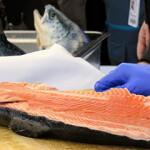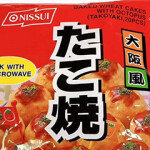Alaska’s Bering Sea snow crab quota down 50 percent
In mixed news for Alaska’s crabbers, the state’s Department of Fish and Game announced the opening of the Bering Sea snow crab season will take place on 15 October, but with an allotted catch that is half that of last season’s.
A report released Thursday, 6 October by Fish and Game put the total allowable catch (TAC) for the 2016/17 season at 21.57 million pounds, which would be the fishery’s lowest in 45 years. Around 19.4 million pounds of the TAC will go to the individual fishing quota, with the rest going to the community development quota.
“We’ve seen a declining trend since the 2006/7 season,” said Robert J. Foy, the head of NOAA’s "Crab Lab" in Kodiak.
Fishing began under the current rationalization program in 2005-2006 season, and last year’s catch per unit was the smallest since the plan was implemented, according to the Fish and Game report. The report cited declines in biomass of mature male and female snow crab as well as a “high proportion of old shell crab in the exploitable population.”
But Foy said environmental factors, not the rationalization program, are to blame for low numbers.
“This has nothing to do with the rationalization process. Seeing stocks fluctuate is not a surprise. We had one of the coldest winters on record in 2012 and one of the warmest on record in 2016,” said Foy, who has been at the Kodiak lab since 2007.
On top of the reduced snow crab catch, the Bering Sea tanner crab fisheries are shut down for the 2016- 2017 season. That means deckhands will have to sort out tanner crab bycatch and toss it back into the Bering Sea. Officials will track the mortality rate on tanner crab that is returned to the ocean.
The snow crab season will run through May 2017.






Share